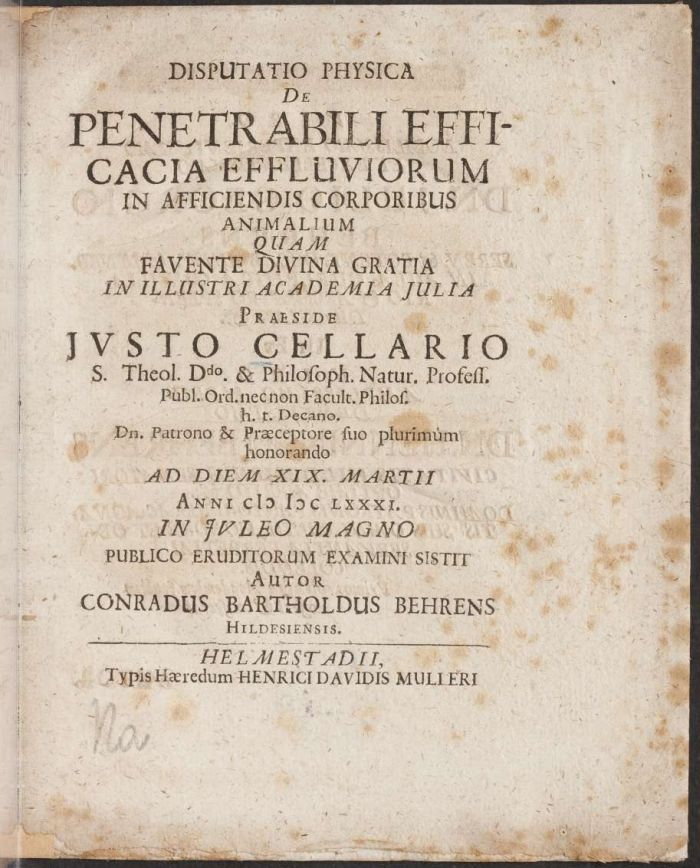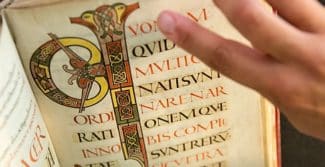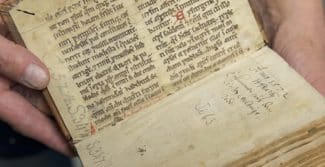3 June 2020
The power of barely visible particles
Nature can conjure up phenomena that are impossible to see with the naked eye. Early modern societies who experienced all manner of plagues and epidemics knew only too well that death can pass unseen among the population, its presence often not recognised until it is too late. The various theories on corpuscles, effluvia and miasmas that were formulated over the course of the 17th century with reference to Aristotelian philosophy by scholars such as Robert Boyle (1627‒1691) evidently prompted heated debate about the nature of infection and, above all, its role in spreading disease.
Effluvia: everything is airborne
Such questions also galvanised physics and medical professors of the Academia Julia in Helmstedt (1576‒1810), the then State University of the Duchy of Brunswick-Lüneburg. In March 1681, with outbreaks of the plague in Vienna (1679), Leipzig (1680) and Wolfenbüttel (1681) very much in the air, they decided to hold a disputation. That same year physics professor Justus Cellarius (1649‒1689) and the student Conrad Barthold Behrens (1660‒1736), who would go on to become a renowned plague doctor and personal physician to Herzog Anton Ulrich (1633‒1714), published their disputation on the penetrating power of effluvia and their effects on animal bodies. It was titled Disputatio physica de penetrabili efficacia effluviorum in afficiendis corporibus animalium (Physical Disputation on the Penetrating Power of Effluvia and the Effect They Have on Animal Bodies). The key term ‘effluvia’ (from the Latin effluvium: a flowing out) illustrated how Helmstedt scholars viewed the phenomenon: diseases were spread by minute airborne bodies similar to those in the water cycle. These particles had also been described by the English natural philosopher and experimental chemist Robert Boyle in his Of the Strange Subtilty of Effluviums. According to Cellarius and Behrens, effluvia were also compatible with Aristotelian theories on the corporeal vapours produced by water and earth. Yet it was possible to be more precise, as Robert Boyle, Kenelm Digby (1603‒1665) and others had noted: because magnets and odours showed that bodies release effluvia into the air and that these carry with them properties of themselves. How else – as both Giovanni Alfonso Borelli (1608‒1679) and Boyle plausibly stated – could animals, when hunting or during the rutting season, smell each other across such distances with the aid of the wind if not through the effluvia that emanated from them?
Subtle, all-penetrating miasmas
If some odours might be nourishing and pestilences could even be smelled, rotten effluvia (or miasmata – from the Greek μιαίνω, meaning ‘pollute’ or ‘defile’), as Cellarius and Behrens concluded, must harbour within them the terrible danger of infection with deadly diseases. Since odours caused nausea and animals could spread rabies without direct contact, it could be assumed, in keeping with Helmstedt physicians such as Heinrich Meibom (1638‒1700) and Valentin Heinrich Vogler (1622‒1677), that the plague could also be passed on by effluvia, which entered the human body with their fermenting power through the pores. The effluvia could survive for very long periods of time, even on inanimate material, Cellarius and Behrens cautioned emphatically. Swords, wallpapers, all kinds of household utensils, indeed, even spider webs and money: all these things, as famous plague doctors like Isbrand van Diemerbroeck (1609‒1674) had demonstrated, could be contaminated by the virus (not to be confused with the contemporary understanding of the word!) and could lie in wait, often for months on end – even buried under snow and earth – to administer certain death. The involvement of tiny worms (vermiculi), as posited by the Jesuit Athanasius Kircher (1602‒1680) in his Scrutinium physico-medicum contagiosae luis, quae pestis dicitur, was deemed improbable by Cellarius and Behrens, who thought that these were more likely to be a symptom of the infection rather than its cause. As the famous Helmstedt physician Conring (1606‒1681) had already pointed out in his Disputatio inauguralis medica de peste, proof had yet to be delivered using a microscope that plague particles (animata ista pestis seminaria) did indeed circulate through the air like inanimate poisonous effluvia (venenata effluvia), as Kircher had claimed.
Infectious theories
Thus one may conclude that in the 17th century there were evidently still no clearly defined terms that would have made it possible to differentiate, say, between viral and bacterial infections; and it would undoubtedly be more than misleading to invent stories about precursors of modern conceptions. However, when Justus Cellarius died of severe dysentery at the age of 40 in 1689, he would have understood on his deathbed that he had fallen victim in some way to the type of infection that he had himself described. What makes this 1681 disputation so interesting is not so much what it might have pointed to in a very vague way but rather the incipient break it made with past ideas: in the late 17th century, infected by the various theories of the day on corpuscles, effluvia and miasmas, in particular those developed by Robert Boyle between 1660 and 1680 in numerous works based on atomistic, Cartesian and Aristotelian philosophical axioms, the university of Helmstedt struck out on its own to challenge the position occupied hitherto solely by the mighty Aristotle – whose work it held in high esteem – at least in the field of natural philosophy.
The author
is a (Neo-)Latin philologist and research associate at the Freie Universität Berlin and the University of Jyväskylä, Finland. His research focuses on early modern debates and scholarly cultures as well as central and northern European university history of the 17th and 18th centuries.
Additional information about Benjamin Wallura







